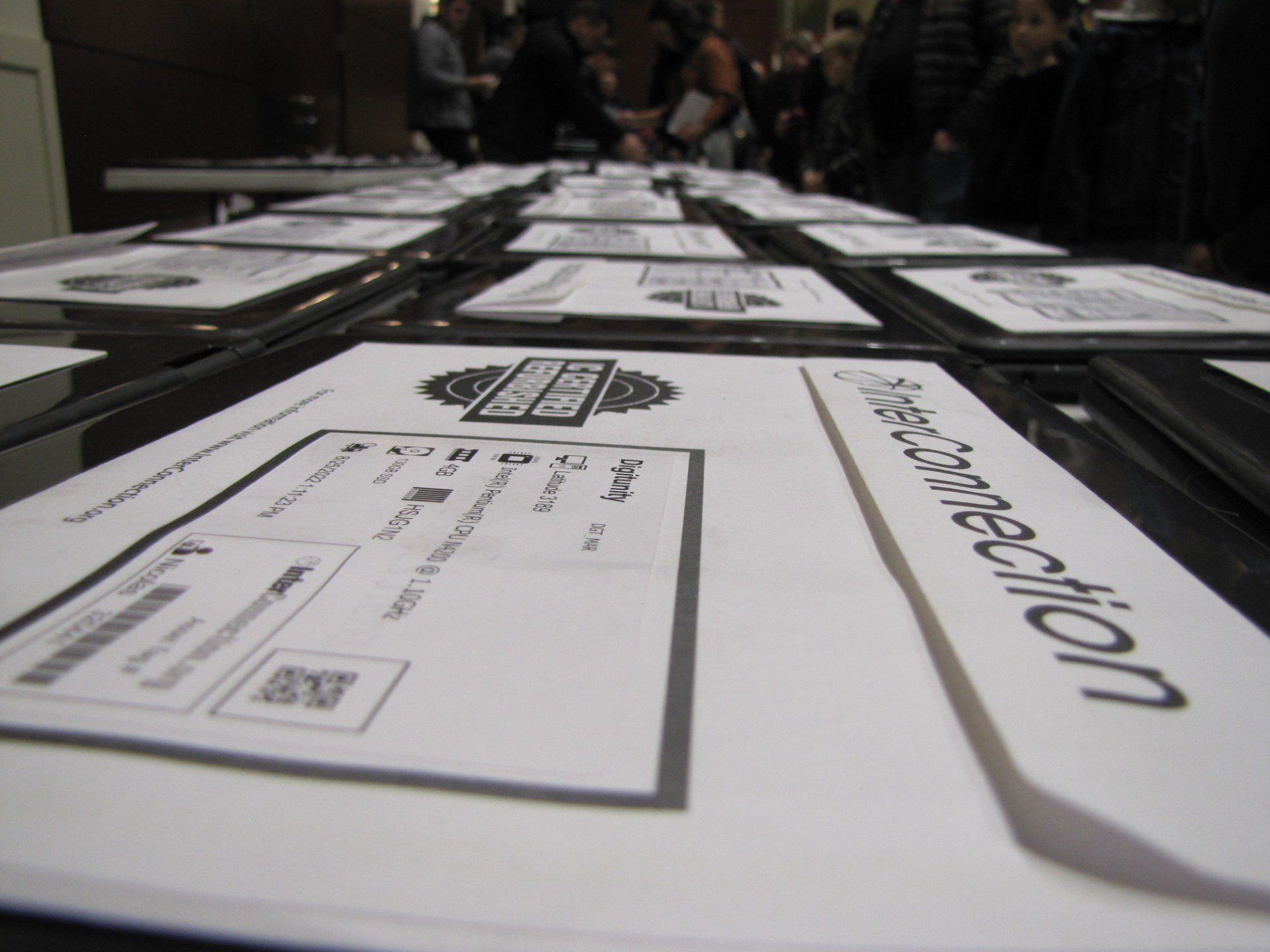 Packages of laptaps ready to be distributed by InterConnection
Packages of laptaps ready to be distributed by InterConnection Many folks reading this will take access to a computer for granted. That is not the fault of any person; it’s the reality of our world. We use computers every day to do everything from writing emails to paying rent to booking doctor’s appointments to checking our kids’ grades and talking with teachers. They are truly vital tools. However, for many, access to affordable and dependable computers is a luxury, not a guarantee.
I grew up low-income. My father is still a construction worker at 70, my mother was a student and stay-at-home mom for me and my brother. We didn’t have much, and what we did have went to the “necessities” like food, rent, and making sure the lights and heat stayed on in the winter – and being from Colorado, those winters can get cold! All this to say, the concept of a new computer was something that wasn’t really on our minds. Like many students, my high school had computers to use during the day – WAY back in the days of Windows 7 – and I had an old hand-me-down desktop at home that allowed me to write my papers. The issue? Towards the end of my junior year of high school, it died. And, in a story that you hear every day, other costs took priority. I had resigned to the idea that I wasn’t going to be able to fully participate in school, that my hopes of getting into college were reduced because I couldn’t research or apply at home, and that my ability to communicate with friends and family was made that much harder because I couldn’t access Facebook.
That was the story, until a nonprofit organization like the one I work for now, InterConnection, granted my school computers for students in need to keep and take home. Simply put, this changed my life.
The application I wrote that got me into college was written on that computer. I applied for financial aid on that computer. My final paper for high school was written on that computer. I selected a dorm, connected with my roommate, got my summer assignments, and ordered materials on that computer. I applied for my first solo apartment and “adult” job on that computer. And for the first two years of college – Go Cougs – I used that computer every day for everything.
It finally gave out and I had to get a replacement before I finished college. But by that time, I had a job and my family’s financial situation wasn’t as stressed as it was before. When I purchased my next computer, I still chose to buy a refurbished computer through a nonprofit. When I got teased or asked why I didn’t just get the newest MacBook Air by friends and classmates, I always would say, “Oh, ‘cause this was cheaper.” In reality, it’s because I felt comfortable with it. Because without getting that free refurbished computer when I was 17, I wouldn’t be here. I wouldn’t have been able to apply for school, or scholarships, or housing assistance. I wouldn’t have been able to pursue my dreams and the dreams of my parents, and I wouldn’t have been able to set myself on the path that got me here. I’m now the Director of Partnerships and Programs at InterConnection, a Seattle non-profit doing the very work that allowed me to get a computer. In this role, I work with local community organizations to get computers to folks for free.
While I would love for my story to be an anecdote from history, the fact is that many of our neighbors do not have access to necessary technology, and the cost of new technology is only going up. I finish this post, therefore, with an ask. Think about how you use your computer and what you would do without it. Then, maybe, drop by InterConnection to donate your old ones so community members like 17-year-old me can have the same opportunities that I did.
Morgan Costello-Hostsettler is the Director of Partnerships and Programs at InterConnection, a Seattle non-profit that works to bridge the digital divide and protect the environment through sustainable e-waste recycling, refurbishment, and reuse. Last year, InterConnection distributed over 3,200 computers to low-income individuals and families and diverted over 700,000 pounds of e-waste from landfills.